Areas of Research
The Department of Biochemistry is a multidisciplinary program in basic and translational science that encompasses a wide-range of advanced research topics utilizing cutting edge approaches in cellular and molecular biochemistry leveraging multiomic
and multispectral imaging strategies. The research faculty of the Department of Biochemistry is actively involved in one or more of the following major research areas:
| Cancer Biology and Pathology |
|---|
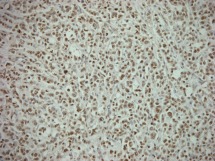 Many
cancers arise from defects in cell biology, including osteosarcoma and soft tissue sarcoma, leukemia and lymphoma, and carcinoma of the skin, liver, and colon, and, breast and prostate cancer. Research investigates cell growth regulation
and the links between dysregulated cell growth, cancer, and aging. Topics include genetic and epigenetic regulation of oncogenes and tumor suppressors, and factors that regulate cancer-compromised cell cycle control, mediate cell senescence,
control chromosome segregation, cancer stem cells and govern cell motility. Links between chromatin structure and/or nuclear structure, higher order gene organization and tumorigenesis are being explored. Many
cancers arise from defects in cell biology, including osteosarcoma and soft tissue sarcoma, leukemia and lymphoma, and carcinoma of the skin, liver, and colon, and, breast and prostate cancer. Research investigates cell growth regulation
and the links between dysregulated cell growth, cancer, and aging. Topics include genetic and epigenetic regulation of oncogenes and tumor suppressors, and factors that regulate cancer-compromised cell cycle control, mediate cell senescence,
control chromosome segregation, cancer stem cells and govern cell motility. Links between chromatin structure and/or nuclear structure, higher order gene organization and tumorigenesis are being explored. | Christopher Berger - Lab
Chris Francklyn - Lab
Prachi Ghule - Lab
Robert Hondal - Lab
Robert Kelm - Lab
Gary Stein - Lab
Janet Stein - Lab
|
| Bone Biology and Skeletal Complications of Malignancies |
|---|
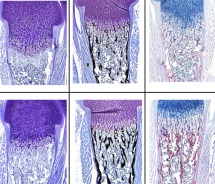 The
Department of Biology has unique programs that bring together a focus on the molecular, cellular and genetic models to understand regulatory mechanisms for the formation and homeostasis of bone and cartilage. Mechanisms regulating
cell proliferation in the MSK system are being addressed. Competency for stem cell commitment to osteoblast differentiation is being examined. Pathologic disorders currently being investigated include osteopetrosis, metastatic bone
disease, chondrodysplasia related to dwarfism, rheumatoid and osteoarthritis, and bone loss related to age, embryonic malformations associated with disruption of signaling pathways and transcription factor networks. Analysis of bone
tissue from humans and mouse models are supported by Core facilities that include genetic, epigenetic, and proteomic analysis, specialized histology, in vivo molecular imaging, scanning and electron microscopy and high resolution micro-computed
tomography. The
Department of Biology has unique programs that bring together a focus on the molecular, cellular and genetic models to understand regulatory mechanisms for the formation and homeostasis of bone and cartilage. Mechanisms regulating
cell proliferation in the MSK system are being addressed. Competency for stem cell commitment to osteoblast differentiation is being examined. Pathologic disorders currently being investigated include osteopetrosis, metastatic bone
disease, chondrodysplasia related to dwarfism, rheumatoid and osteoarthritis, and bone loss related to age, embryonic malformations associated with disruption of signaling pathways and transcription factor networks. Analysis of bone
tissue from humans and mouse models are supported by Core facilities that include genetic, epigenetic, and proteomic analysis, specialized histology, in vivo molecular imaging, scanning and electron microscopy and high resolution micro-computed
tomography.
| Jane Lian - Lab
Jonathan Gordon - Lab
Janet Stein - Lab
Gary Stein - Lab |
| Cellular Structure and Function |
|---|
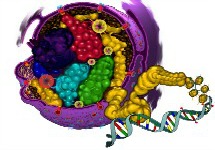 Regulatory
mechanisms that are operative in cancer stem cells which are treatment resistant and account for disease reoccurrence are being explored. The nucleus architecturally organizes nucleic acid metabolism. The DNA containing chromatin,
an RNA containing nuclear matrix, and the nuclear lamina/envelope are interconnected structures. Subassemblies at their intersections spatially organize DNA replication, RNA transcription, RNA processing, the packaging of DNA into
active or silenced chromatin, and other processes. Changes in these structural inter-relationships are a major driver of disease, including cancer and premature aging. Regulatory
mechanisms that are operative in cancer stem cells which are treatment resistant and account for disease reoccurrence are being explored. The nucleus architecturally organizes nucleic acid metabolism. The DNA containing chromatin,
an RNA containing nuclear matrix, and the nuclear lamina/envelope are interconnected structures. Subassemblies at their intersections spatially organize DNA replication, RNA transcription, RNA processing, the packaging of DNA into
active or silenced chromatin, and other processes. Changes in these structural inter-relationships are a major driver of disease, including cancer and premature aging.
| Gary Stein - Lab
Janet Stein - Lab
Jane Lian - Lab
Delphine Quenet - Lab
|
| Coagulation Biology and Disease |
|---|
T he
Coagulation group is investigating all aspects of hemostasis. The work includes the identification, purification, kinetic characterization and structure determination of new clotting factors & inhibitors, pseudo in-vivo functional
studies, cascade modeling, the role of the platelet and the identification of genetic risk markers. he
Coagulation group is investigating all aspects of hemostasis. The work includes the identification, purification, kinetic characterization and structure determination of new clotting factors & inhibitors, pseudo in-vivo functional
studies, cascade modeling, the role of the platelet and the identification of genetic risk markers. |
Stephen Everse - Lab
Robert Kelm - Lab
Jay Silveira - Lab
|
| Enzymology, Physical Biochemistry, and Structural Biology |
|---|
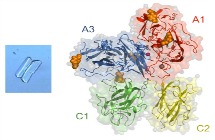 Enzymes
touch virtually every aspect of biochemistry. How an enzyme recognizes a substrate, cleaves it, and releases it are complex problems requiring a multi-disciplinary approach to understand. Many laboratories in the Department are taking
a quantitative and/or structural approach to study enzymes in action. Research areas include: selenium containing enzymes, tRNA synthetases, enzymes and co-factors of the coagulation cascade, and DNA replication and recombination machines
amongst others. The Department of Biochemistry, as part of the UVM College of Medicine’s Structural Biology Initiative, has embarked on a major program to establish structural biology as a core research discipline on this campus. Enzymes
touch virtually every aspect of biochemistry. How an enzyme recognizes a substrate, cleaves it, and releases it are complex problems requiring a multi-disciplinary approach to understand. Many laboratories in the Department are taking
a quantitative and/or structural approach to study enzymes in action. Research areas include: selenium containing enzymes, tRNA synthetases, enzymes and co-factors of the coagulation cascade, and DNA replication and recombination machines
amongst others. The Department of Biochemistry, as part of the UVM College of Medicine’s Structural Biology Initiative, has embarked on a major program to establish structural biology as a core research discipline on this campus.
|
Christopher Berger - Lab
Chris Francklyn - Lab
Erik Ruggles - Lab
Jay Silveira - Lab
Robert Hondal - Lab
Robert Kelm - Lab
Stephen Everse - Lab
|
| Functional Nucleic Acid/Protein Interactions |
|---|
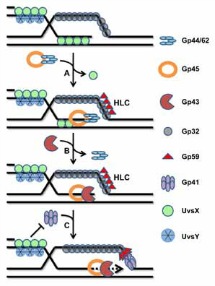 How
is a DNA replication fork assembled and regulated? How does a synthetase discriminate among dozens of tRNA species to find its one specific partner? How are DNA double-strand breaks repaired? Understanding mechanisms of transcription,
translation, DNA replication, repair, and recombination are fundamentally important for predicting the stability or instability of genomes, for a molecular understanding of carcinogenesis, and for the design of new anti-tumor and anti-microbial
agents. These and other important issues are being addressed by Biochemistry Faculty with interests in Nucleic Acid/Protein Interactions. Experimental approaches employed include thermodynamic, kinetic, and structural studies of DNA-protein
and RNA-protein complexes, site directed mutagenesis of protein and nucleic acid components, plus biochemical assays for DNA synthesis, RNA synthesis, aminoacylation of tRNA, DNA recombination and repair. How
is a DNA replication fork assembled and regulated? How does a synthetase discriminate among dozens of tRNA species to find its one specific partner? How are DNA double-strand breaks repaired? Understanding mechanisms of transcription,
translation, DNA replication, repair, and recombination are fundamentally important for predicting the stability or instability of genomes, for a molecular understanding of carcinogenesis, and for the design of new anti-tumor and anti-microbial
agents. These and other important issues are being addressed by Biochemistry Faculty with interests in Nucleic Acid/Protein Interactions. Experimental approaches employed include thermodynamic, kinetic, and structural studies of DNA-protein
and RNA-protein complexes, site directed mutagenesis of protein and nucleic acid components, plus biochemical assays for DNA synthesis, RNA synthesis, aminoacylation of tRNA, DNA recombination and repair. | Prachi Ghule - Lab
Robert Kelm - Lab
Gary Stein - Lab
Janet Stein - Lab
Delphine Quenet - Lab
|
| Clinical and Translational Projects |
|---|
| The Department of Biochemistry provides leadership for the NNE-CTR, an NIH-funded program that supports clinical and
translational investigation to address the health and healthcare challenges of Northern New England rurality. A data science initiative and a Pilot Project program to address prevention, early detection, and survivorship of chronic
disease that includes cancer, cardiovascular disorders, musculoskeletal diseases, substance use disorders, and mental health. The Biochemistry Department leads and coordinates the Vermont Biomedical Research Network, an NIH-supported
program that is building biochemical research structure throughout Vermont by facilitating the research capability of faculty and the education of undergraduate students in Biomedical research. |